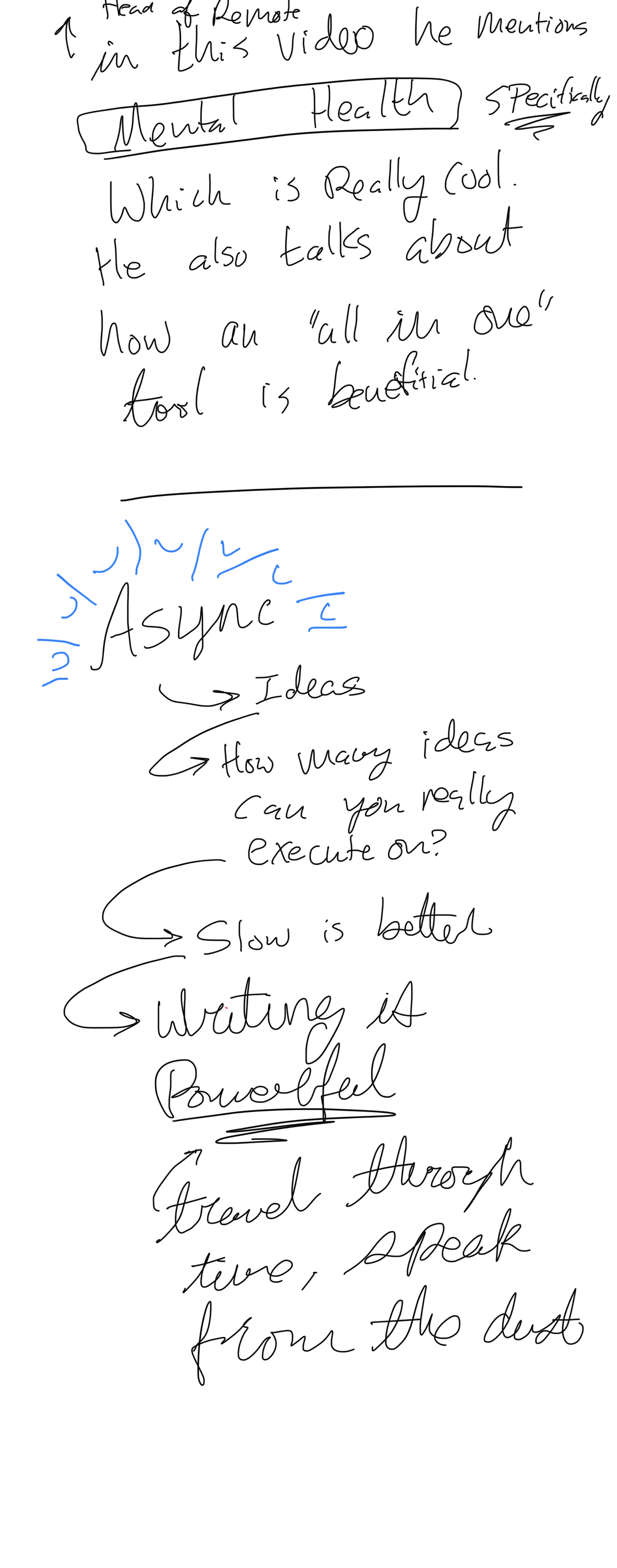Asynchronous communication, The cure to notification overload (Youtube)
My Summary
- One of the major benefits is mental health
- (this was also mentioned in Gitlab meetup on Async communication (Youtube))
- Low Context culture ^11b40c
- "What if nobody was awake?"
- Async requires good tools
- Go back and forth 3 times means you should hold a meeting
https://www.youtube.com/watch?v=8TDMz5Kz1AE
#handwritten-notes


The biggest problem is GitLab not working handbook first. We have an amazing handbook that allows us to collaborate, onboard new people, and think collectively.
However, it is counterintuitive to communicate changes to the handbook. The default of people, when they wish to communicate a change, is to send a Slack message, send an email, give a presentation, or tell people in a meeting — anything but make a change in the handbook.
It's slower for them. It's quicker to use any other form. If they make a change in the handbook, they first have to find the relevant part of the handbook, they sometimes have to adjust the handbook to make sure their change will fit in, they have to go through a technical process and a review or two, and they have to wait a bit before it's deployed.
It's slower than any other option. However, it allows people that commit a change after that to build upon a change. When they take that extra time, it's building a foundation for the next thing.
I think of it as brick laying. Every piece of information is a brick. At GitLab, there is a well-structured house, and everyone adds to that one house. Because we're pretty particular on how we build it, it has a strong foundation and we can build it very high.
In every other company, they send the brick into the hands of people. Everyone is receiving bricks daily that they have to add to the house they're building internally. They forget things and things are unclear. A lot of context has to be created because there is no context around where to place the bricks.
So, you can end up with a thousand houses that look quite different, that are all hanging a bit, and each time you add a brick to the top one pops out at the bottom. — GitLab co-founder and CEO Sid Sijbrandij
Backlinks: